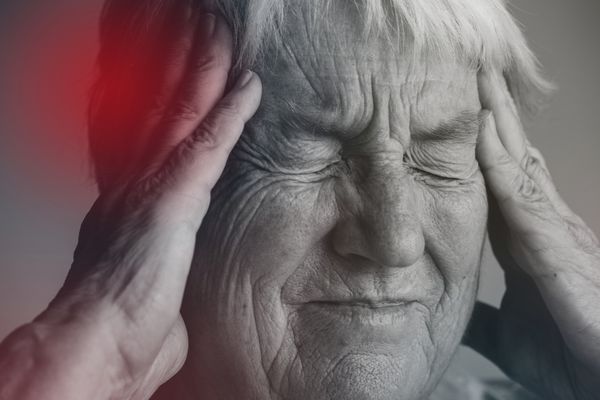
For an industry so concerned with looks, fashion magazines can be remarkably murky, especially when it comes to money. Those at the top often do very well; those at the bottom commonly receive close to nothing, and exactly what goes on in the middle isn’t entirely clear.
A new magazine plans to upend these conventions. Published entirely in black and white, and running to 418 pages, Nuts doesn’t employ any fancy big-name photographers or star models, and plans to split its profits equitably and openly.
“Each magazine will have its own profit and loss statement,” says the British-born, New York-based editor Richard Turley, who is also the editorial and design director of Interview magazine. “Contributors have a stake in their specific edition, which they can earn and learn from.”
Once the initial issue of Nuts has reached the end of its shelf life, Turley will meet with all its contributors on Zoom call, to share production costs and financial statements and divide up any remaining money. This will be like “an AGM of sorts”, he says.

Turley thinks fashion magazines could do with greater transparency, not least because he also wants to show his contributors – who come from China and the Congo, as well as the US and Europe – how he and his small team created the mag. “We want to encourage people, so that one day they might be able build their own thing, something more reflective of their ideas,” he says. “Give a man a fish, teach a man to fish.”
Turley – an multi-award-winning art director, best known for his work at the Guardian, MTV, Bloomberg Businessweek and the advertising agency Wieden+Kennedy – believes the systems underlying glossy mags aren’t working. “If you use the same process again and again and again, you end up with the same thing,” he says.
He equates the tried-and-tested model of publishing pleasant pictures of beautiful models, wearing expensive clothes, shot by well-known photographers, closely with creative demise. He’s horrified when a famous photographer’s name comes up. Rather than approach a bunch of prominent image makers via social media or woo any upscale fashion houses, Turley and his collaborators chose to work with a wide range of young stylists (the people who choose the clothes for fashion shoots, but don’t usually push the shutter button) from around the world, many of whom have actually shot their own photos. The results, he feels, are a better reflection of how we dress.
“I was thinking about whether any of the fashion images I see inform the way I dress and they just don’t,” he says. “Style chooses you – not the other way around – and when you force it, everyone can tell. That’s why fashion freaks me out. But I get there’s sex and glamour to artifice too.”

Much of the clothing featured in Nuts is either secondhand or made by mainstream brands, “which I actually think is kind of the most interesting fashion moment”, he says.
“It’s something that big fashion brands can’t get near,” he goes on. “When you buy a Chanel top you’re buying the story of Chanel; you’re buying a little bit of their history.” In contrast, the people in Turley’s new mag (some of whom are professional models, and some of whom are simply friends of friends) wear a lot of Nike and Uniqlo, though the photographs take on some of the personality and personal history of their wearers.
“I don’t want to drift in spirituality,” says Turley, “but I think the way you take pictures does take on meaning.” In one of Nuts’ shoots, the subjects told each other secrets just before pictures were taken; in another series of images, a family takes a trip to the California department of motor vehicles while dressed in Rick Owens. There are submissions from London and New York, but also Colombia and Iran. “The Iranian stuff was incredibly hard to get,” says Turley.

Once they were assembled, Turley printed off every photo and drum-scanned them, producing a uniform, flattened black-and-white series of images, a technique partly inspired by Japanese photobooks and partly a financial necessity. “It costs four times as much money to print in colour,” he says.

Other sources of inspiration include Buddhism and The Whole Earth Catalog, the much storied, black-and-white 20th-century counterculture publication, which showed readers how to construct a moss roof, build a geodesic dome and use an early personal computer.
This simple idea of delivering information appeals to Turley. “The Whole Earth Catalog is essentially a toolkit,” he says. “That’s an interesting structure, and I’ve been looking at those instructions.”
The result is an exciting and intriguing publication, which looks both new, while also echoing Hal Fischer’s Gay Semiotics photo books from the 1970s, Apartamento’s documentary-style reportage, and the best, most free-form seconds from 1990s and early 2000s editions of British style mags, such as The Face, i-D and Dazed & Confused.
Turley knows that British readers of a certain age will associate the title Nuts with a very different publication. Rights to the name, held by IPC Media and used until 2014 for its weekly lads’ mag, expired in July of this year, and while Turley says he’s reclaiming the name, he was also inspired by his own use of the word. “You know, this is nuts and that is nuts, it’s a word I use quite a lot,” he says, “I wrote it down one day and ended up quite liking it.”

Another of the many things that Nuts seems entirely unconcerned by is the business of selling new clothes. There are no advertisements in Nuts at the moment, and while he can foresee a time when it might carry ads – “kind of like a newspaper’s colour supplements that we can stick inside” – Nuts’ contributors have not begged any of the world’s great fashion brands for otherwise sought-after clothing samples drawn from next season’s collections.
“We just didn’t need to,” says Turley. “I mean, everyone wears clothes. Everyone has clothes. They’re just lying around, piling up. You can’t get rid of them.”
Nuts is for sale at nuts.international.







